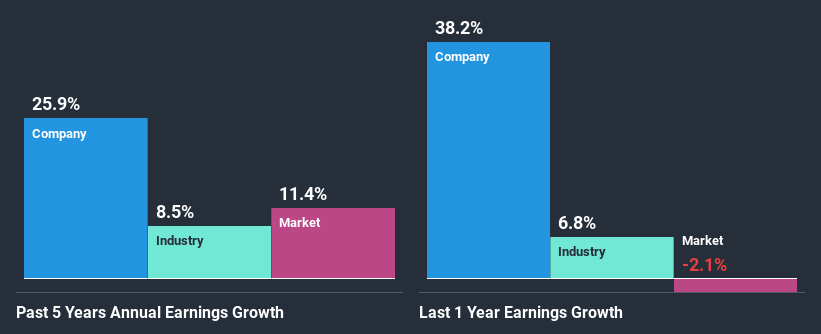Rural Funds Group's (ASX:RFF) Stock Has Seen Strong Momentum: Does That Call For Deeper Study Of Its Financial Prospects?
Rural Funds Group's (ASX:RFF) stock is up by a considerable 13% over the past three months. As most would know, fundamentals are what usually guide market price movements over the long-term, so we decided to look at the company's key financial indicators today to determine if they have any role to play in the recent price movement. Particularly, we will be paying attention to Rural Funds Group's ROE today.
Return on equity or ROE is a key measure used to assess how efficiently a company's management is utilizing the company's capital. In simpler terms, it measures the profitability of a company in relation to shareholder's equity.
View our latest analysis for Rural Funds Group
How Is ROE Calculated?
The formula for ROE is:
Return on Equity = Net Profit (from continuing operations) ÷ Shareholders' Equity
So, based on the above formula, the ROE for Rural Funds Group is:
8.5% = AU$48m ÷ AU$558m (Based on the trailing twelve months to June 2020).
The 'return' refers to a company's earnings over the last year. One way to conceptualize this is that for each A$1 of shareholders' capital it has, the company made A$0.09 in profit.
What Is The Relationship Between ROE And Earnings Growth?
So far, we've learned that ROE is a measure of a company's profitability. We now need to evaluate how much profit the company reinvests or "retains" for future growth which then gives us an idea about the growth potential of the company. Assuming all else is equal, companies that have both a higher return on equity and higher profit retention are usually the ones that have a higher growth rate when compared to companies that don't have the same features.
Rural Funds Group's Earnings Growth And 8.5% ROE
At first glance, Rural Funds Group's ROE doesn't look very promising. Although a closer study shows that the company's ROE is higher than the industry average of 6.6% which we definitely can't overlook. Especially when you consider Rural Funds Group's exceptional 26% net income growth over the past five years. Bear in mind, the company does have a moderately low ROE. It is just that the industry ROE is lower. So, there might well be other reasons for the earnings to grow. For example, it is possible that the broader industry is going through a high growth phase, or that the company has a low payout ratio.
Next, on comparing with the industry net income growth, we found that Rural Funds Group's growth is quite high when compared to the industry average growth of 8.5% in the same period, which is great to see.
Earnings growth is a huge factor in stock valuation. The investor should try to establish if the expected growth or decline in earnings, whichever the case may be, is priced in. Doing so will help them establish if the stock's future looks promising or ominous. What is RFF worth today? The intrinsic value infographic in our free research report helps visualize whether RFF is currently mispriced by the market.
Is Rural Funds Group Efficiently Re-investing Its Profits?
Rural Funds Group seems to be paying out most of its income as dividends judging by its three-year median payout ratio of 76%, meaning the company retains only 24% of its income. However, this is typical for REITs as they are often required by law to distribute most of their earnings. Despite this, the company's earnings have grown significantly as we saw above.
Besides, Rural Funds Group has been paying dividends over a period of seven years. This shows that the company is committed to sharing profits with its shareholders. Our latest analyst data shows that the future payout ratio of the company is expected to rise to 92% over the next three years. However, the company's ROE is not expected to change by much despite the higher expected payout ratio.
Conclusion
In total, it does look like Rural Funds Group has some positive aspects to its business. Specifically, its respectable ROE which likely led to the considerable growth in earnings. Yet, the company is retaining a small portion of its profits. Which means that the company has been able to grow its earnings in spite of it, so that's not too bad. That being so, a study of the latest analyst forecasts show that the company is expected to see a slowdown in its future earnings growth. Are these analysts expectations based on the broad expectations for the industry, or on the company's fundamentals? Click here to be taken to our analyst's forecasts page for the company.
This article by Simply Wall St is general in nature. It does not constitute a recommendation to buy or sell any stock, and does not take account of your objectives, or your financial situation. We aim to bring you long-term focused analysis driven by fundamental data. Note that our analysis may not factor in the latest price-sensitive company announcements or qualitative material. Simply Wall St has no position in any stocks mentioned.
Have feedback on this article? Concerned about the content? Get in touch with us directly. Alternatively, email editorial-team@simplywallst.com.

 Yahoo Finance
Yahoo Finance 
